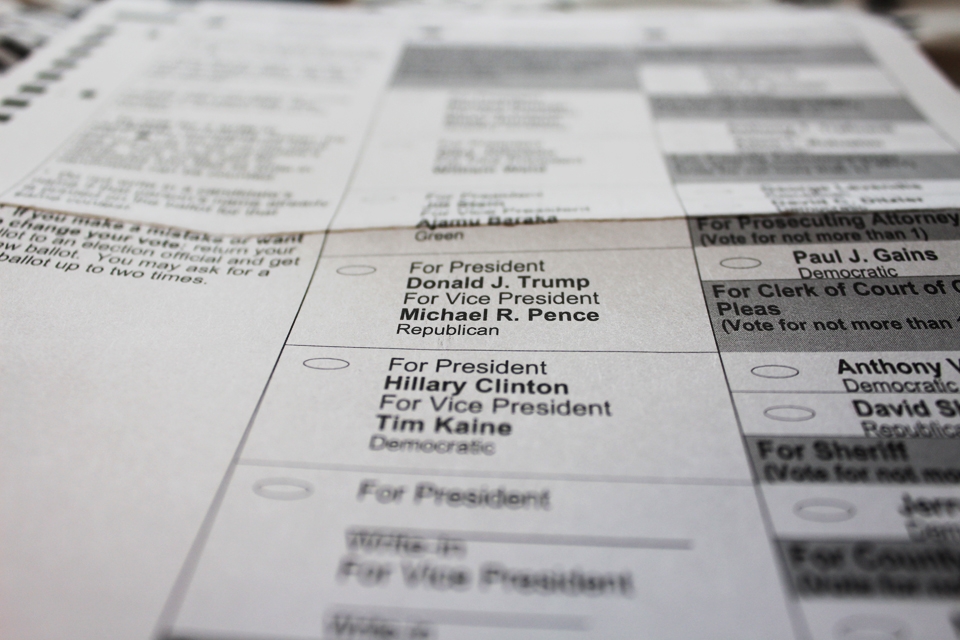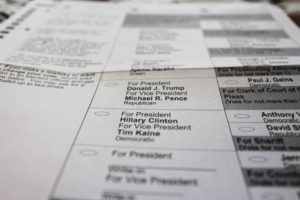

It’s a good idea to take a look at the full ballot before you vote. A Google search will help you find a sample ballot for your district.
By Zachary Landau | Staff Writer
You’ve heard friends, family and celebrities harp on about how important it is for you to vote, so you went ahead and registered. But since this might be the first time you, as well as many college students, are voting, it is a good idea to know what is on the ticket and how to decide which boxes to check.
So let’s address each part in turn, starting with what’s on the ballot.
The easiest way to figure out who and what one can vote for is to get what is called a sample ballot. Sample ballots list all of the major candidates and each office they are running for, as well as any issues or amendments (called ballot measures) that are being deliberated. This year, for example, there is a state amendment that limits the terms of Pennsylvanian Supreme Court justices. Ballots are everywhere online, and the easiest one to find is on Google itself. Simply search for “sample ballot,” fill out the resulting address field and the appropriate form will appear.
For the more scrupulous voter who wants to know a little bit more about the issues on the ballot, a fantastic resource to check out is “Ballotpedia.” Not only does it have its own sample ballot that offers a summary of each candidate, but it has exhaustive lists of everything one could possibly need to know about each politician. The website is so detailed, it even includes individual articles on nearly every congressional race, and that includes state and federal. There is also a quiz to help indecisive voters figure out where they lie on the political spectrum.
While it is a nice sentiment, knowing everything there is to know about every issue is a lofty goal. As such, pick the issues that are most important to you and pick your candidates based on a few guidelines. Maybe you only want to support candidates who will fight against No Child Left Behind, or maybe you want to see a candidate champion LGBTQ+ rights. Whatever the case may be, try to find what matters the most for you and research it as much as possible.
After your line-up is complete, you need to know how to vote. First, you should make sure that your registration is complete by checking on your voter status, which you can do online. This will save a lot of headache come Nov. 8. While checking your status, also take note of your polling place address. For most Duquesne students, you are going to be heading to Epiphany Church right next to the arena. Those living in Uptown will be heading to the fire station on Forbes and Stevenson. Most in South Side are going to the Market House. It’s important to note that these are just a few common places that you may be going to in order to vote, so it is best to double check online.
Come Election Day, you need to bring a couple things with you. First-time voters are required to bring a form of ID (student ID is perfectly acceptable, as is a driver’s license, passport or PA state ID). A registration-confirmation card is not a requirement, but it is helpful in case something goes wrong, and it can also be used as a form of ID. If you have a physical sample ballot, or just a list of who and what you want to vote for, feel free to bring that as well. On the day of, there will be a sign-in sheet and volunteers to help direct you through the process. It’s easy and, cutting out transportation time, will take you no more than 15 minutes. Don’t forget that polls open at 7 a.m. and close at 8 p.m.
If you cannot make it to your polling station (because of illness, observance of a religious holiday or any other sanctioned reason), you can request an absentee ballot by the Tuesday before Election Day: Nov. 1 this year. Unfortunately, this cannot be done online. Requests must be mailed to the county’s election official’s office, and your finished ballot must be mailed back by Nov. 8.




